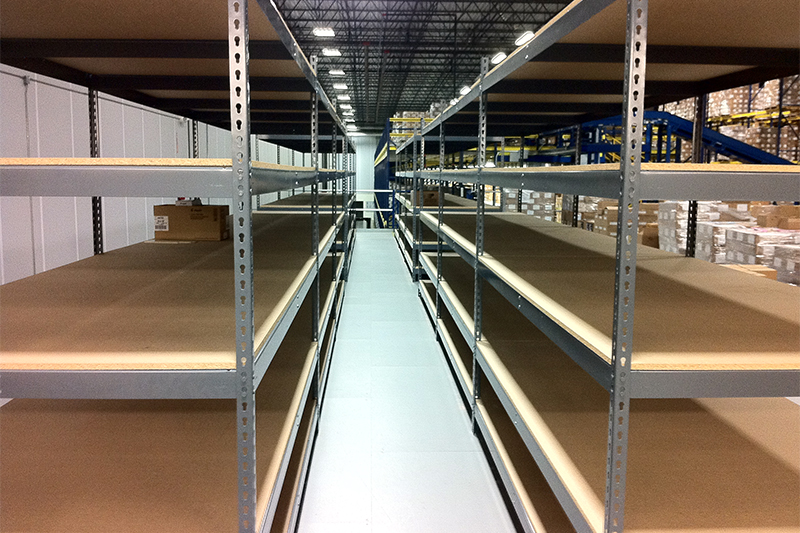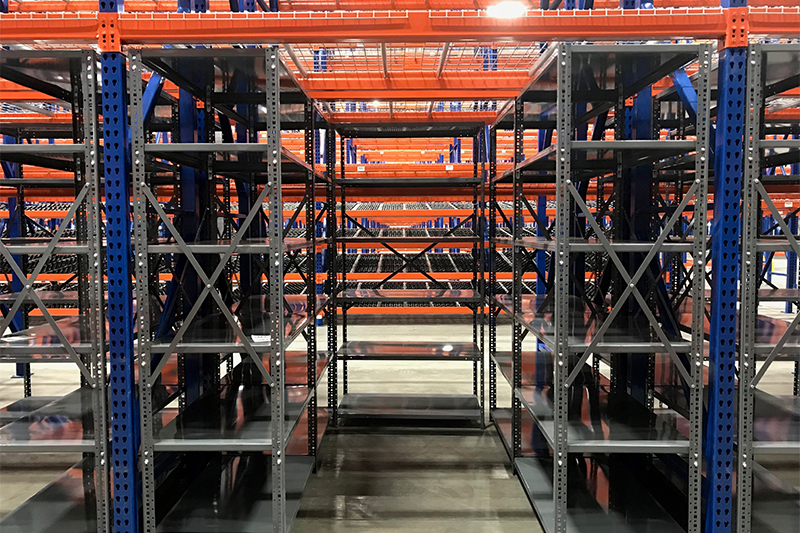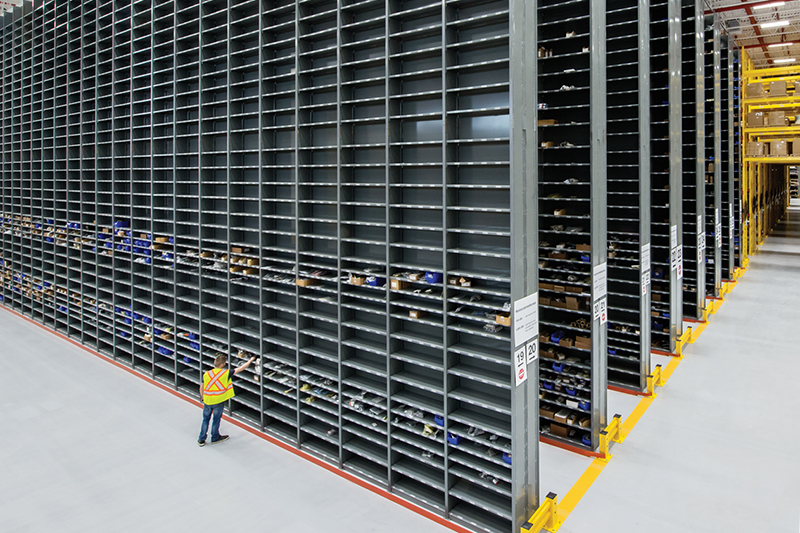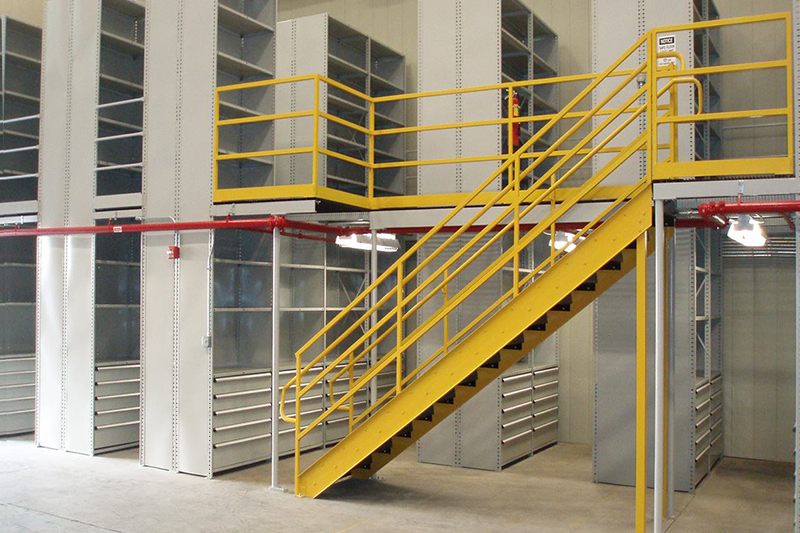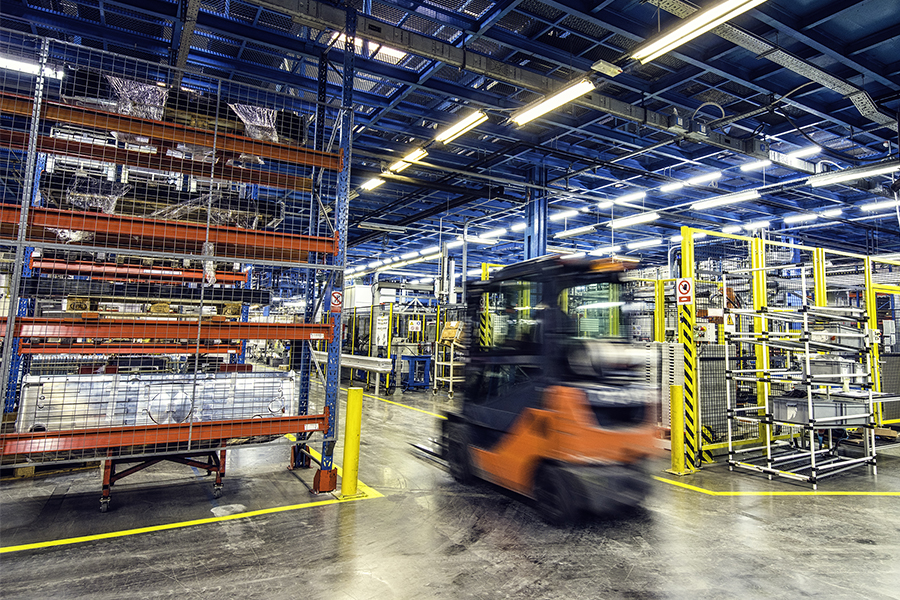
We strive to provide every customer with the best combination of storage solutions for their operation by understanding their project goals, fulfillment philosophy, inbound and outbound throughput requirements and budget.
Whether working with clients in the layout of a small stockroom or filling a large distribution center with racking and multi-level pick modules, our goal is always to guide our customer in industry “Best Practices” while refining aspect of our design to suit their specific industry needs.
We understand that no two facilities have the exact product mix, customer service level requirement and general performance expectations so how can their designs be identical? In most cases our blend of storage technologies utilized will make your facility uniquely positioned to maximize your efficiency.
Facility Layout, Design Studies and Engineering Services
- CAD Based Rack or Shelving Layout Services – included at no charge with every project
- “Design for Fee” Services – involves analysis of order data to prepare velocity profiles charts, order characteristics, relative distribution of pallet, case and piece pick order components as well as identify seasonality and promotional requirements specific to your business
- CAD Documentation of Existing Facility – used for preparation of Life Safety Plans, emergency evacuation plans, utility infrastructure planning and general client planning
- Building Code Review and Permitting Services – architectural code review is often ignored aspect of facility and project planning but must be considered for every project in this age of stricter local code governance
- Fire Protection Survey and Code Review – analysis of existing sprinkler and fire alarming capacity as well as proper NFPA code review of racking and modular construction projects is necessary to preclude problems during permitting process
- Structural and Seismic Design Service – structural engineering is required on many racking and all mezzanine and modular construction projects
Pallet Racking

Conventional Selective Racking |
Classic racking system used for full pallet storage and case picking configurations.
|
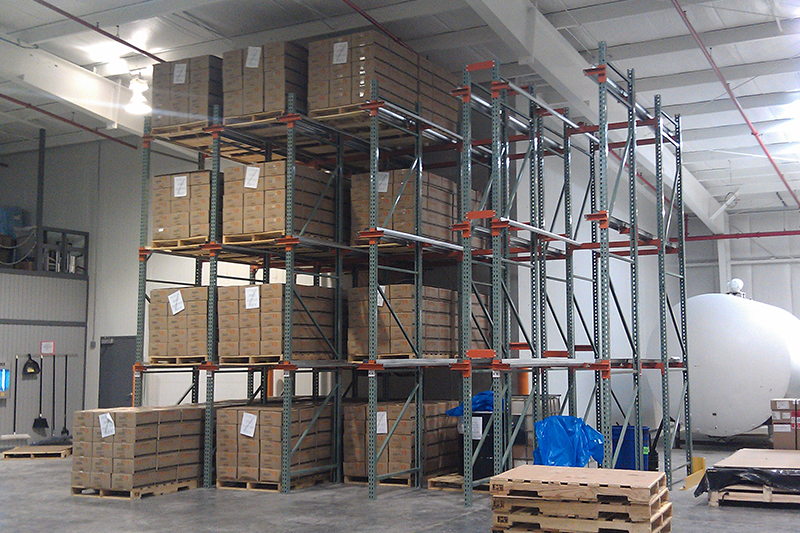
Drive-in and Drive-thru Racking |
Dense storage technology used to store many pallets of the same SKU in one bay.
|
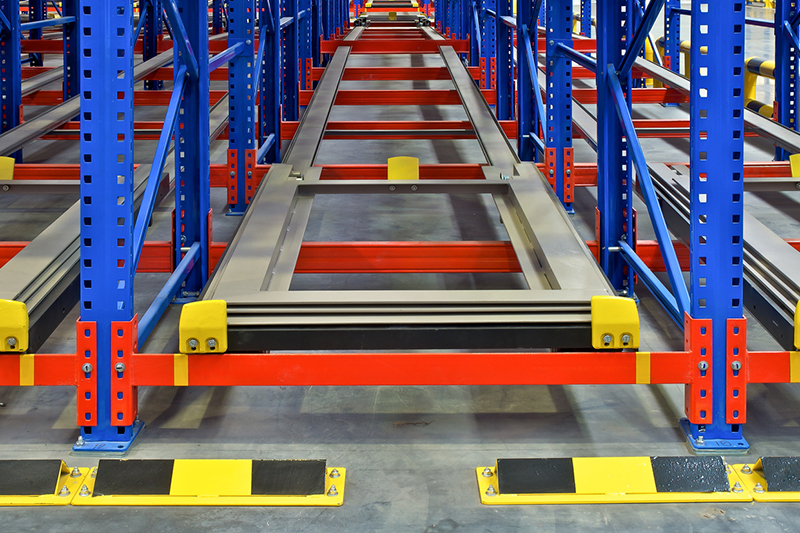
Pushback Racking |
Dense storage technology for storage of products with pallet quantities of at least 2 pallets per SKU.
|
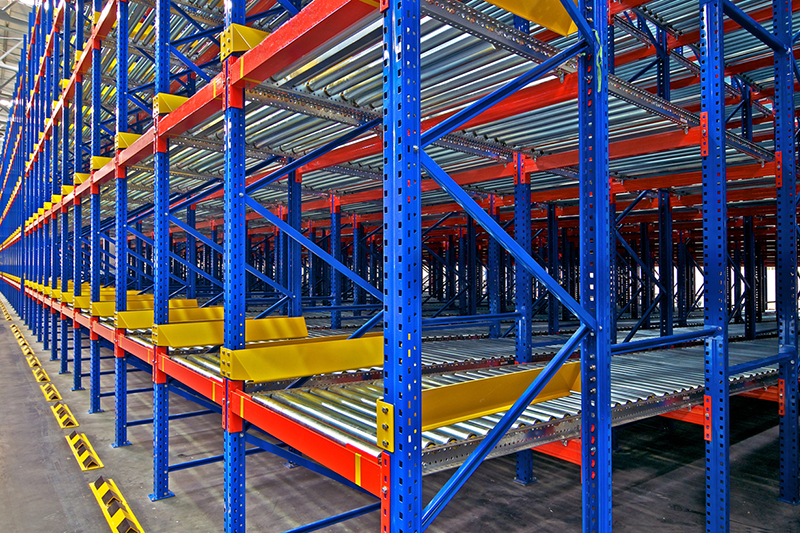
Palletflow Racking |
Dense storage technology for operations with high volume pallet storage for FIFO products.
|
Small Parts Shelving
Mechanized Racking Systems
Pallet Shuttle Systems
Deep lane racking structure configured like drive-in systems, but no truck is required to enter storage lanes. Pallets are deposited on one end of the lane and low-profile robotic pallet carts run under loads, raise loads and slowly move them down the lane to accumulate on the other end of the lane. Suitable in similar applications as palletflow racking but more space efficient since long lanes can be configured without raising the loading side to create pitch. Pallets can run in both direction and logic can be programmed into system to effectively operate like a Unit Load AS/RS System.
Mobile Racking Systems
Single rows of selective racking with upright on heavy carts that run on perpendicular tracks allowing forklift aisles to be closed, collapsing the entire storage cube into a dense block of pallets. An aisle can be opened between any two rows allowing access to racking on both sides of the aisle. Very effective for storage of product of relatively slow movement. The concept is similar to Mobile Shelving used for document storage.
Our strong relationships with the world’s top manufacturers allow us to design systems that pass on significant savings to our customers without sacrificing quality.
Let us show you how technology can impact your operation.
Specialized Storage
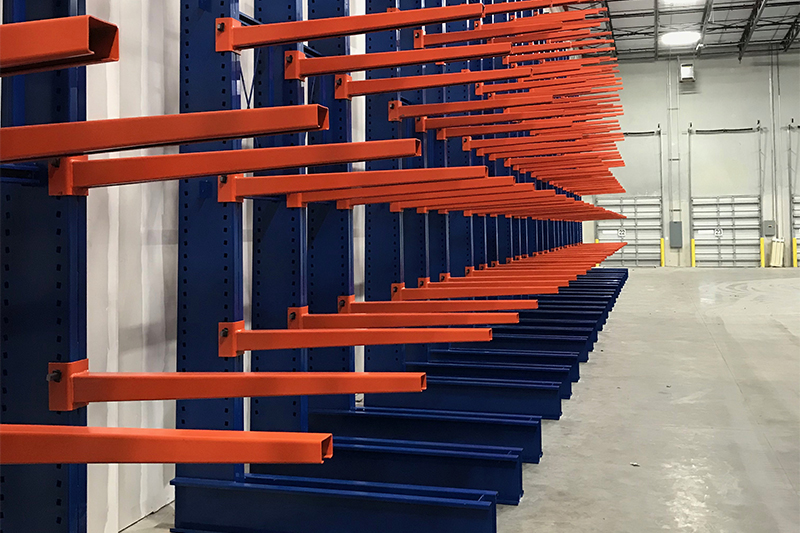
Cantilever Racking |
Cantilever racking is composed of towers and arms arranged in rows to support long loads such as pipe, conduit, wood trim, electrical strut etc.
|
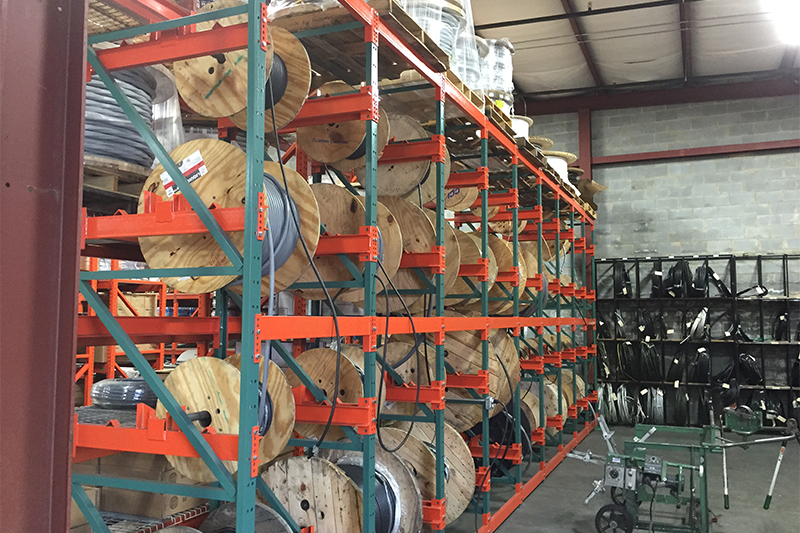
Wire Reel & Coil Racking |
Heavy duty racking custom made to hold heavy reels of wire or coil steel.
|
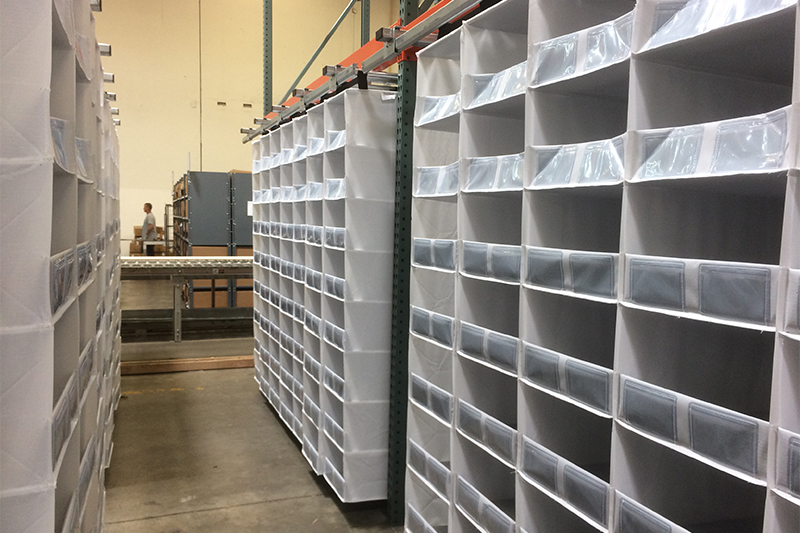
High Bin Density Racking |
High density storage of product with a high sku count yet relatively low quantity stored per sku is generally stored using bins or cubes created with sheet metal, wire mesh or cloth.
|



